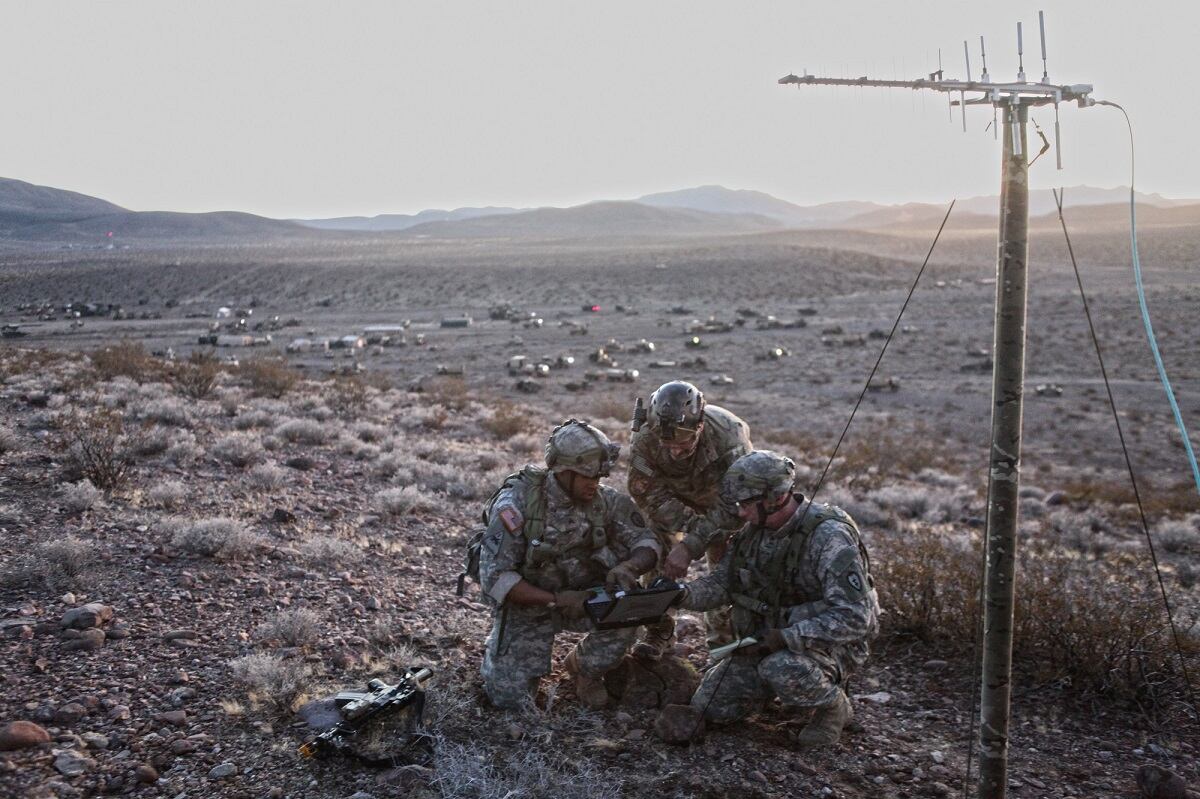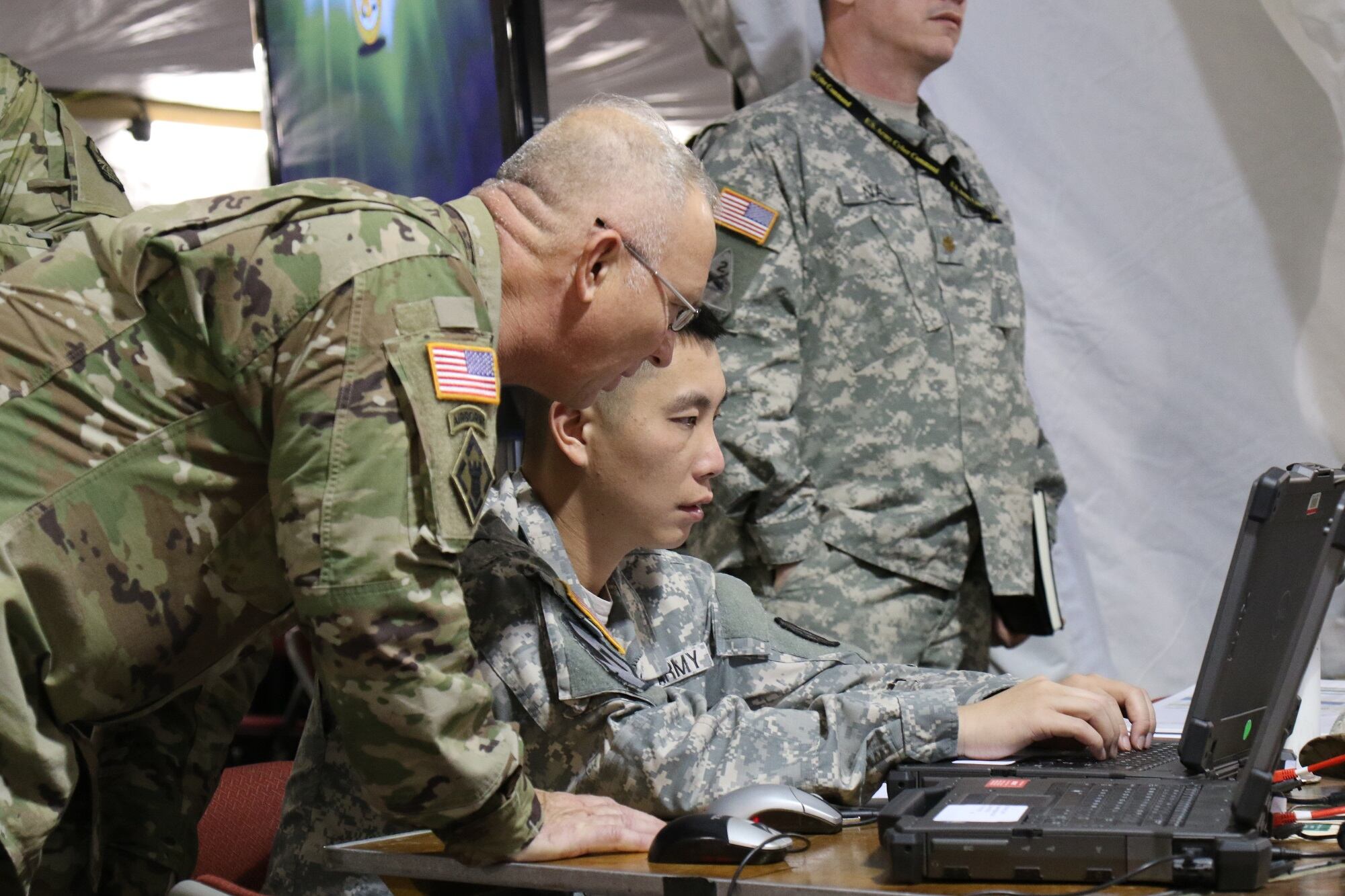The Army is making several changes to be in a better position to compete with adversaries in cyber, the electromagnetic spectrum and space.
Russia and China have begun to organize all information-related capability — to include cyber, electronic warfare, information operations and space — under singular entities. Now, Army leaders, say the service must do the same.
“Integrated formations will be innovative because they’ll help us create novel approaches to problem solving by leveraging multiple skillsets,” David May, senior intelligence adviser at the Army Cyber Center of Excellence, said during a presentation at TechNet Augusta in August.
RELATED

May outlined five force design updates the Army is implementing. Four of those five updates will begin immediately to provide competitive edge in multidomain operations.
1. The widespread introduction of cyber and electromagnetic activities
May said the Army will introduce cyber and electromagnetic activities, or CEMA sections, at every echelon from the brigade to service component commands. These sections will plan, synchronize and integrate cyber and EW operations as well as conduct spectrum management.
RELATED

At the Army’s cyber school, effective Oct. 1, all previous electronic warfare personnel in the functional area 29 will transition into the cyber branch to serve as these CEMA planners. That’s important because it moves those staffers out from working as a functional area specialist and into an operational branch, Maj. Gen. John Morrison, commander of the Cyber Center of Excellence, the home of the cyber school, told C4ISRNET during an interview at TechNet.
May said Army leaders are expected to approve this plan in the next six weeks. Moreover, the update will not require any additional growth to the Army as it will reorganize existing workforce.
2. New electronic warfare platoons
Electronic warfare platoons will be stood up within brigades residing inside military intelligence companies working in tandem with signals intelligence teams and double the Army’s sensing capability in the electromagnetic spectrum, May said.
He added that these teams will also be able to deliver local, as opposed to remote, cyber effects and military information support operations.
A pilot effort is expected to begin in the fall with a tentative test unit identified pending final approval from Forces Command. This will allow the Army to conduct rapid prototyping on kits and organizational structures for these new forces, Morrison said.
“I always emphasize the fact that the path we’re on will double our sensing capabilities inside a brigade combat team. We’ll restore electronic attack and that includes the ability to deliver cyber effects that will deny, degrade or destroy enemy capabilities in and through the [electromagnetic spectrum],” Morrison said.
3. EW companies at corps
Similar to the electronic warfare platoons within the military intelligence companies, new electronic warfare companies will be in the expeditionary military intelligence brigades and will have a counter reconnaissance mission to support long range precision fires and start in 2021.
4. A new multidomain detachment at Fort Lewis
May described a new detachment within the multidomain task force located at Fort Lewis in Washington, which is where the Army is working to figure out the way ahead for multidomain operations through experimentation and participation in exercises.
This involves standing up an intelligence, cyber, electronic warfare, space detachment within the multidomain task force.
The ICEWS (pronounced I-CUES) will integrate all those capabilities plus signal, information operations and targeting, May said. This group will support the multidomain task force counter-anti-access/area denial mission, which will be piloted in the fall.
Morrison said it’s important to not just focus on building capability in tactical formations and the CEMA sections, but across the breadth of the battlefield.
5. A new cyber warfare support battalion
May said this battalion will fall under Army Cyber Command and serve Army-specific missions, not U.S. Cyber Command joint missions. It will be used to integrate intelligence, cyber, electronic warfare, signals, information operations and fires all into one formation. It will also be able to deliver effects remotely and through local expeditionary cyber teams that will plug into the CEMA sections.
May said there is approved growth for these teams with an initial capability slated for 2019.
Mark Pomerleau is a reporter for C4ISRNET, covering information warfare and cyberspace.








